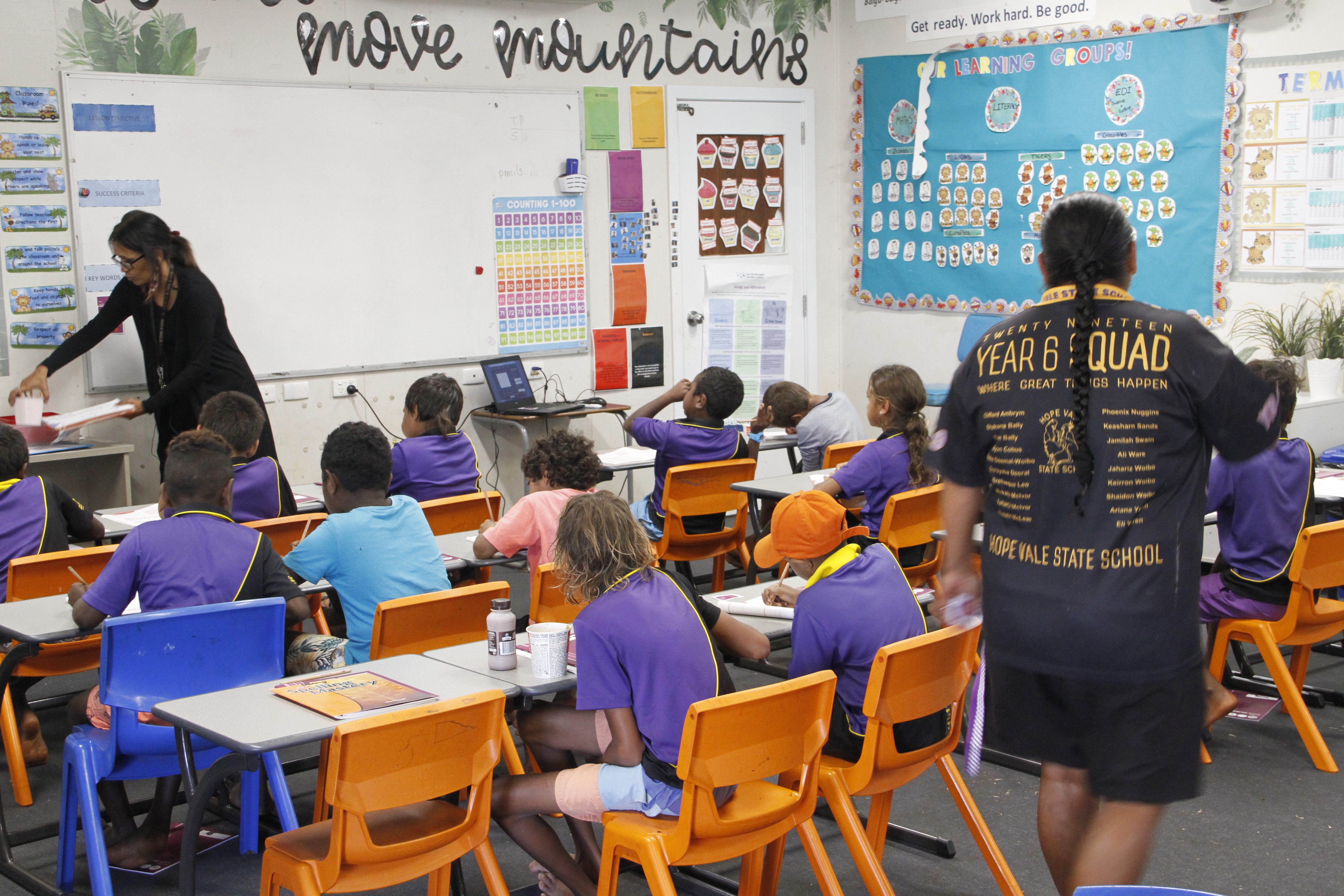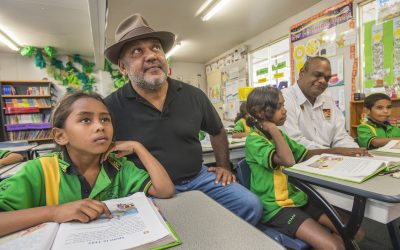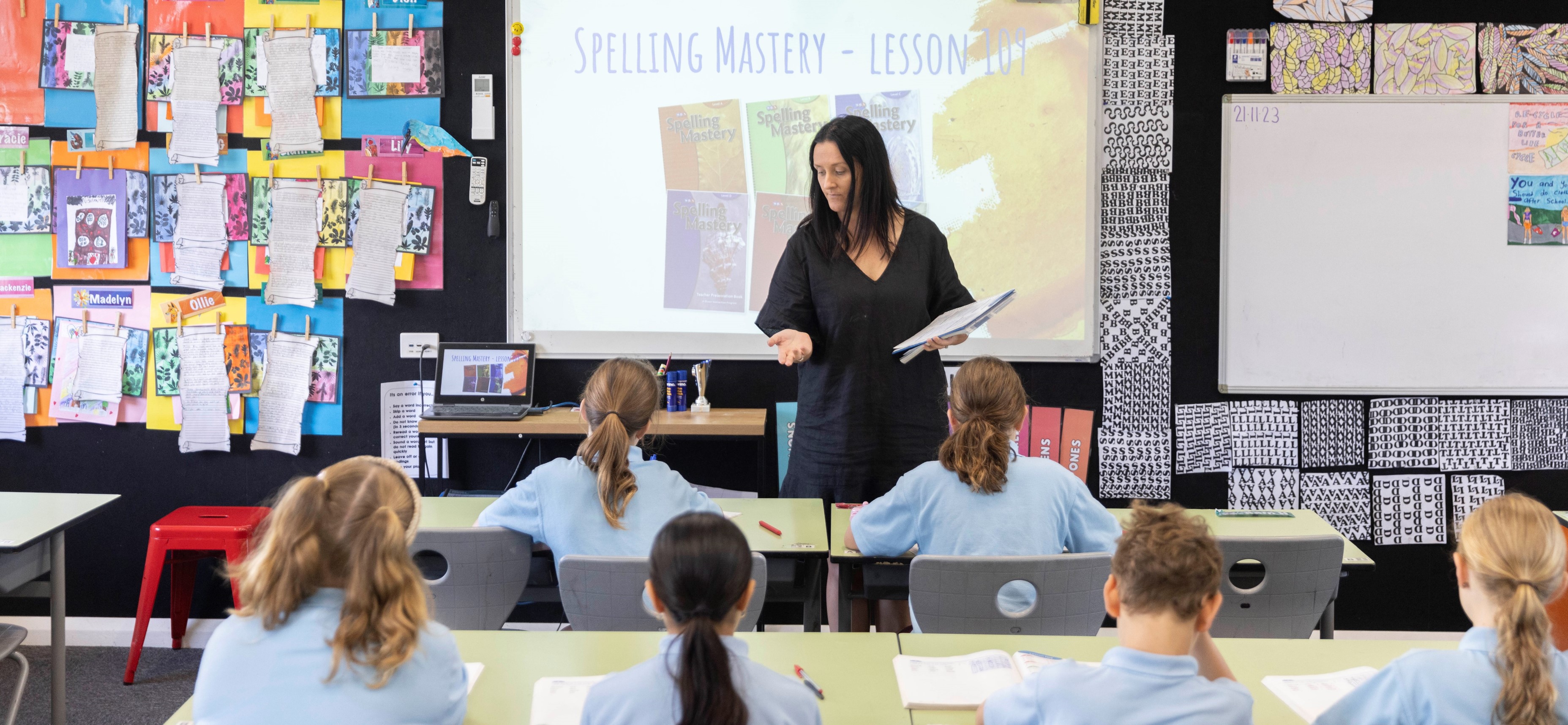Introduction to letter formation
Letter formation refers to the process of learning how to write out each letter of the alphabet correctly.
This process involves understanding the directionality, starting points, and strokes needed to create letters and words on paper that are legible, but it starts much earlier with giving sounds to individual letters and recognizing them.
Becoming proficient at letter formation is crucial for early literacy development, as it underpins a child’s ability to write words and sentences fluidly, allowing them to focus on composing text rather than on the act of writing itself.
The Achievement Standard for Foundation Year students in the Australian Curriculum specifies that students should be able to “form letters, spell most consonant-vowel-consonant words and experiment with capital letters and full stops”, which lead to “creating short written texts”.
In this article, we explore the five essential stages of teaching letter formation as well as five underlying principles, including phonics integration, individualized pacing, and technology-assisted learning.
Additionally, we outline a structured teaching approach based on the Oz-e-English: Language (Writing) teaching units, which are aligned with the Australian curriculum, with an emphasis on the explicit direct instruction approach which integrates feedback and assessments.
5 Stages of the letter formation process
Teaching letter formation is a detailed process which involves guiding learners through a series of interconnected stages, integrating a variety of techniques to build a solid writing foundation.
1. Connecting sounds with letters
This stage focuses on phonemic awareness by explicitly teaching the sounds (phonemes) that each letter makes, as well as the letter names. Understanding the connection between letters and sounds is foundational for reading and writing (see “Integration with phonics” below), and engaging activities and songs for letter formation can make this learning process fun and memorable. For example, teachers might introduce the letter ‘S’ by emphasizing its sound, /s/, and linking it to words that start with ‘S’, such as “sun” or “snake”. This not only helps in recognizing the letter but also in understanding its use in different words.
2. Recognising individual letters
The ability to recognize letters and letter combinations involves identifying each individual letter and distinguishing its unique shape and form from others. This requires visual discrimination skills, including telling apart letters that look similar, such as ‘b’ and ‘d’. Activities to promote this skill may include letter hunts, matching games, or sorting exercises where children group letters or find letters in their environment. This stage lays the groundwork for the association between written letters and their phonetic counterparts.
3. Differentiating uppercase from lowercase letters
4. Recognising basic CVC words
Consonant-Vowel-Consonant (CVC) words are foundational to the formation of many high-frequency words (e.g. “sit, “cat”, “bed”). Learning these helps further reinforce the association between letters and sounds, and learners can apply their knowledge of phonics in a practical context to decode the sounds of letters in simple words, a crucial skill for reading fluency. Teachers might employ blending exercises, where children learn to combine individual sounds to form words, or use flashcards and interactive games to practice reading CVC words.
5. Tracing letters on page
Tracing is the culmination of letter formation, as it helps children understand the shape and form of each letter through physical movement. Starting with guided tracing where lines are already provided, children learn the correct stroke order and direction for each letter. This hands-on practice develops the fine motor skills and muscle memory, making the transition to independent writing smoother. Alternatives to writing on paper which utilize touch, such as tracing letters in sand or using finger paints, can further reinforce learners’ mastery of the written word.
5 Core principles of teaching letter formation
The effective teaching of letter formation is underpinned by several key principles that serve as essential guides to educators. They are designed to address the multifaceted nature of learning to write, combining insights from phonics, cognitive development, and technological advancements.
Integration with phonics
Phonics espouses the alphabetic principle, or the understanding of the systematic relationship between letters and sounds. It transcends mere recognition of letters, encouraging a deeper comprehension of how letters and combinations of letters represent the sounds of spoken language. This dual approach empowers students to decode unfamiliar words using their knowledge of letter sounds and to encode spoken words into written form with greater ease. Furthermore, it acknowledges the reciprocal nature of reading and writing: that understanding the sound structure of words (phonemic awareness) is as critical as mastering their visual representation (letter formation).
Sequential introduction of letters
Introducing letters in a sequence, progressing from less complex to more complex shapes, supports gradual, incremental learning. It reduces the cognitive load on the learner by building upon existing knowledge and skills, also known as “scaffold learning”, where letters are introduced in a carefully considered sequence, starting with straight-line letters such as ‘l’ and ‘t’ before moving on to more complex curved letters like ‘s’ and ‘g’. This way, learners can develop their confidence and not be overwhelmed by the more intricate letter shapes they will encounter later on. Grouping letters with similar formation patterns can also aid learning by creating associations, further reducing cognitive load.
Individualised pacing
The concept of individualised pacing in the context of learning letter formation emphasizes a personalized approach to literacy education, resonating with the principles of differentiated instruction. By allowing each learner to progress at their own pace, educators acknowledge the diverse abilities in the classroom and ensure that learners can fully comprehend and master each concept before advancing to the next. Consistent practice and the periodic review of previously learned letters are critical components of this individualized pacing strategy, as they allow consolidation of skills and help prevent regression. This approach contributes towards an inclusive and supportive learning environment where each student’s unique developmental trajectory is recognized and nurtured.
Technology-assisted learning
Digital tools serve as platforms for innovative teaching strategies, offering students engaging ways to practice letter formation through visual modelling, interactive exercises, and immediate, corrective feedback. Adaptive learning technologies are at the forefront of this educational innovation, as they are capable of tailoring instruction to the individual learner’s performance. By adjusting the difficulty levels of tasks in real time to maintain an optimal learning zone, these tools create a personalized learning path that optimally challenges and engages every student. Moreover, it can reinforce correct practices and address mistakes as they occur, facilitating a constructive learning cycle based on encouragement and positive reinforcement.
Early intervention and remedial programs
These programs aim to proactively identify and address any handwriting difficulties that a student experiences at an early stage, and can significantly mitigate potential impacts on a student’s academic performance and self-esteem in the long-term. Targeted practice within these programs focuses on correcting specific handwriting issues (dysgraphia, for example) while tailoring activities for letter formation to the unique needs of each student. This individualized approach is consistent with constructivist theories of learning, which advocate for teaching which is adaptive to the learner’s existing knowledge and skills, making for a more meaningful and effective learning experience.
Explicit direct instruction in teaching letter formation
Explicit direct instruction (EDI) is particularly effective for teaching letter formation, because it provides structured, step-by-step instruction that breaks down the writing process into manageable tasks.
This method allows for immediate correction and feedback, ensuring that students practice correct letter formation from the start.
EDI’s emphasis on clear objectives and systematic instruction aligns well with the developmental needs of young learners as they master this foundational skill.
Each lesson in Oz-e-English: Writing (Language) is delivered as three separate exercises on three individual days, lasting twenty minutes each:
- Say and Make aims to develop basic sounds and learn basic punctuation of sentences. The students make a sentence with the teacher and then do a peer check to make sure their peers made the correct sentence.
- Make and Trace reinforces what students learned the previous day by making their sentence with coloured cards. The students attempt to trace the sentence and draw a picture that reflects their sentence, and then do a peer check to make sure their peers made the correct sentence.
- Trace and Write allows students to implement what they learned by tracing the model sentence again and attempting to copy the sentence in their workbooks. They then do a peer check to make sure their peers made the correct sentence.
There is an ‘edit’ part to each lesson when students check their own work and that of their peers. After the Day 3 lesson, teachers collect students’ books and provide timely written feedback.
Effective feedback
Feedback is structured using the ‘two stars and a wish’ strategy with an emphasis on progress: the ‘two stars’ highlights what students have done successfully in their sentences, while the ‘wish’ is one improvement the student can make to their writing. Feedback is only focused on students’ writing, and evaluates how well students have applied the knowledge they have acquired to their writing. While marking, the teacher makes notes on common errors across students’ work and embeds explicit teaching into future lessons around these errors.
Progressive and Final Assessments
Students complete a Progressive Assessment in week five of each unit after all exercises in the lessons for week five are complete. This formative assessment requires students to identify language features and edit and construct sentences using the knowledge and skills they have learned so far. A Final Assessment of each unit is conducted in week ten and provides an opportunity for students to demonstrate their understanding of the whole unit. The test results from the summative assessment are used to write report cards in term two and term four.
Letter formation: Next steps
Mastering letter formation is one of the first steps in a child’s journey towards literacy. By navigating through the detailed stages of letter recognition, sound association, and physical practice, educators can equip students with the skills necessary for effective communication and expression through writing. The principles of phonics integration, sequential learning, personalized pacing, and the innovative use of technology, alongside proactive intervention strategies, offer a comprehensive framework for teaching this vital skill.
The Oz-e-English: Language (Writing) curriculum exemplify a structured, engaging approach to reinforce these concepts, underscored by the pivotal role of constructive feedback and systematic assessments. By adhering to these methodologies, educators can ensure that students not only learn how to form letters correctly but also set a solid foundation for their future academic and personal success. Get free access to our English curriculum by signing up for individual membership below.



